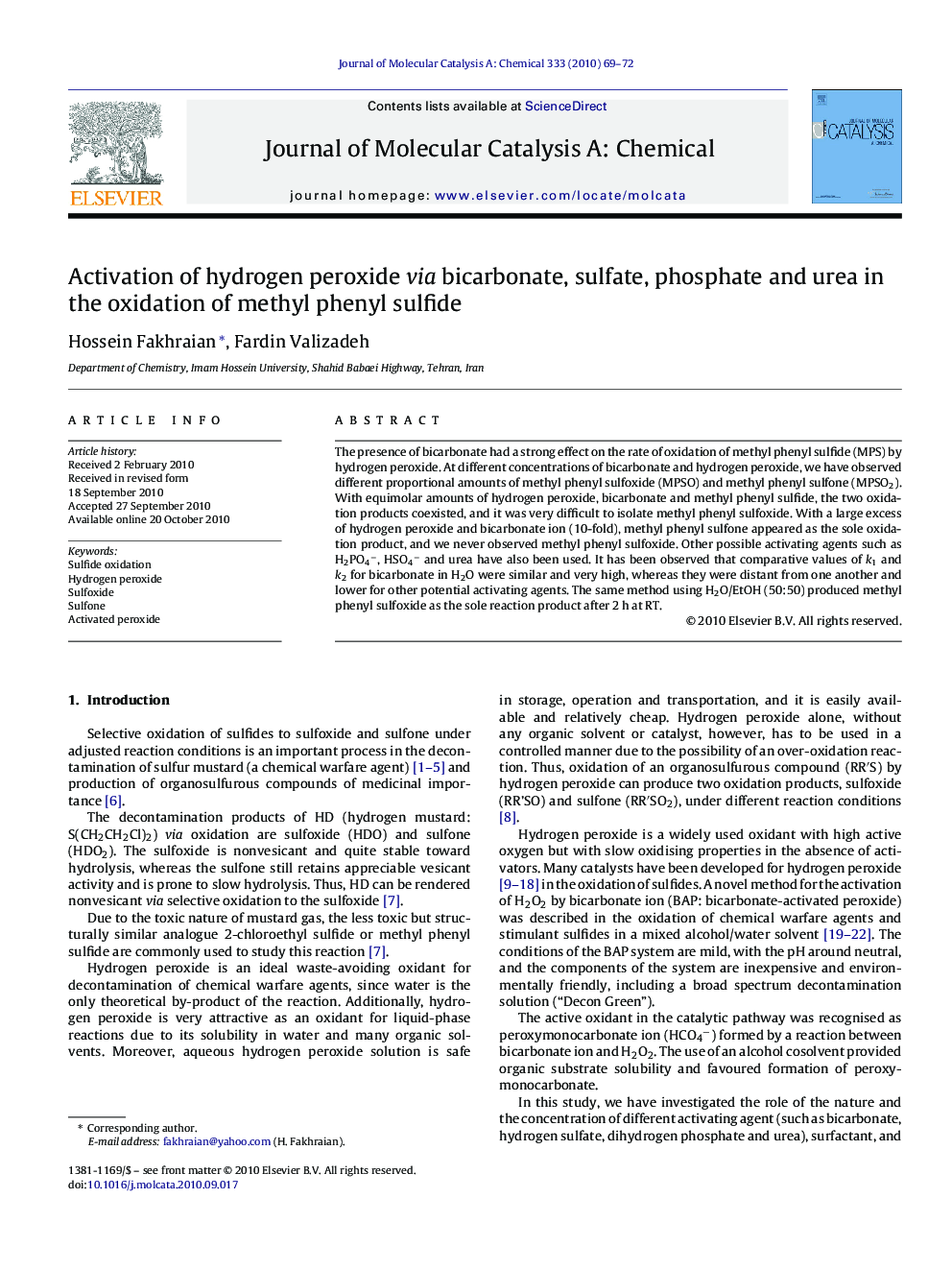| کد مقاله | کد نشریه | سال انتشار | مقاله انگلیسی | نسخه تمام متن |
|---|---|---|---|---|
| 66523 | 48436 | 2010 | 4 صفحه PDF | دانلود رایگان |

The presence of bicarbonate had a strong effect on the rate of oxidation of methyl phenyl sulfide (MPS) by hydrogen peroxide. At different concentrations of bicarbonate and hydrogen peroxide, we have observed different proportional amounts of methyl phenyl sulfoxide (MPSO) and methyl phenyl sulfone (MPSO2). With equimolar amounts of hydrogen peroxide, bicarbonate and methyl phenyl sulfide, the two oxidation products coexisted, and it was very difficult to isolate methyl phenyl sulfoxide. With a large excess of hydrogen peroxide and bicarbonate ion (10-fold), methyl phenyl sulfone appeared as the sole oxidation product, and we never observed methyl phenyl sulfoxide. Other possible activating agents such as H2PO4−, HSO4− and urea have also been used. It has been observed that comparative values of k1 and k2 for bicarbonate in H2O were similar and very high, whereas they were distant from one another and lower for other potential activating agents. The same method using H2O/EtOH (50:50) produced methyl phenyl sulfoxide as the sole reaction product after 2 h at RT.
. At different concentrations of bicarbonate and hydrogen peroxide, various proportional amounts of methyl phenyl sulfoxide (MPSO) and methyl phenyl sulfone (MPSO2) have been observed. Other possible activating agents such as H2PO4−, HSO4− and urea have also been used.Figure optionsDownload high-quality image (32 K)Download as PowerPoint slideResearch highlights▶ In the presence of excess amounts of H2O2 and bicarbonate, k1 ∼ k2; separation of the two oxidation steps was impossible; and methyl phenyl sulfone was the sole final oxidation product. ▶ In the presence of excess amounts of urea, dihydrogen phosphate and hydrogen sulphate, k1〉 k2.▶ In these cases, separation of the two steps was possible, and by controlling the reaction time, each oxidation product (sulfoxide or sulfone) was obtained.
Journal: Journal of Molecular Catalysis A: Chemical - Volume 333, Issues 1–2, 1 December 2010, Pages 69–72